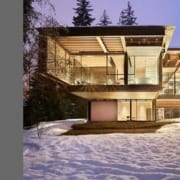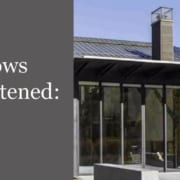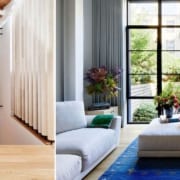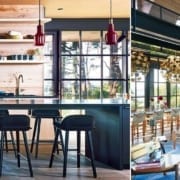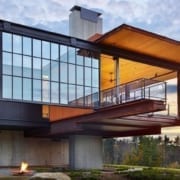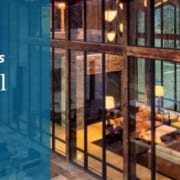Metal Windows: Are Thermally Broken Metal Windows Worth the Cost?
Recently we were talking with a Contractor in Southern California and he told us about a home he’s in the final stages of building.
He had used an aluminum window system which had a large proportion of the openings with non-thermally broken metal windows and doors. The purchase price was reasonable, so the order was placed.
As code compliance was being re-worked for several elements of the building envelope, the Title 24 consultant pointed out that the low thermal performance value of the aluminum windows meant the rest of the envelope now had to be boosted to compensate. The additional insulation to improve the R value of the walls and roof cost over $60,000. Now the purchase price of the windows did not look so attractive and the Owners were stuck with the products as well as the cost of compensating for them.
We’ve mentioned it before – the cost of purchase has to be balanced against the cost of ownership.
The benefits of thermally broken metal windows are worth summarizing as tightening code requirements preclude low-performance metal windows from the market. Some of these benefits are less obvious. After all, thermally broken designs cost more to engineer and produce so they have a higher initial purchase price.
Costs and Benefits of Thermally Broken Metal Windows (Aluminum, Steel, Bronze)
What is the return on investment of using thermally broken metal windows?
In short – comfort, convenience, functionality, code compliance and lower operating costs.
Some specific examples of issues Owners and Contractors contend with if they have non-thermally broken metal windows include:
- Windows ice up on the inside in winter in colder climates
- Heavy condensation forms on the inside of the glass obscuring the view
- The metal frames “sweat” on the interior resulting in pooling of moisture on interior millwork causing stains and damage.
- The windows get so hot in summer or cold in winter that they are uncomfortable to be close to (you may have sat by restaurant windows and experienced this).
- The HVAC system needs to be larger (and more expensive) and works overtime to maintain a comfortable interior – especially in designs where glass comprises 50% or more of the exterior envelope.
- Increased costs for R value insulation in the walls and roof.
- Increased costs for the design team to explore and use “loopholes” in the code to gain code compliance for the envelope overall.
In the luxury custom home niche, the Owners expect increased comfort, convenience, performance and aesthetic excellence. This expectation must be met for a project to be successful. Of course, it’s not the Owner’s job to know the pros and cons of thermal performance — design teams have to bring this information to the owners.
Conversations need to take place so decisions can be made knowledgeably. Owners and their designers don’t pick the cheapest light fixtures, faucets, flooring or cabinets – they pick what they want, balanced against their perceived value of the item. It’s not a commodity mindset – or shouldn’t be if the facts and value equations are understood.
“The essential benefit gained from thermally broken designs over non-thermally broken options is in how the Owners experience their home. Architecture is about delivering an experience. That involves incorporating positive outcomes and avoiding negatives that would detract from the experience.”
Windows and doors are a critical structural component of the envelope. An engineered thermally broken design delivers a positive to the Owners experience and so contributes to the success of the project overall. The value equation is in favor of the better product.
Deliver the Experience and make it the best that it can be. That’s what it’s all about.
For more detailed information about the benefits of thermally broken metal windows, click here.



